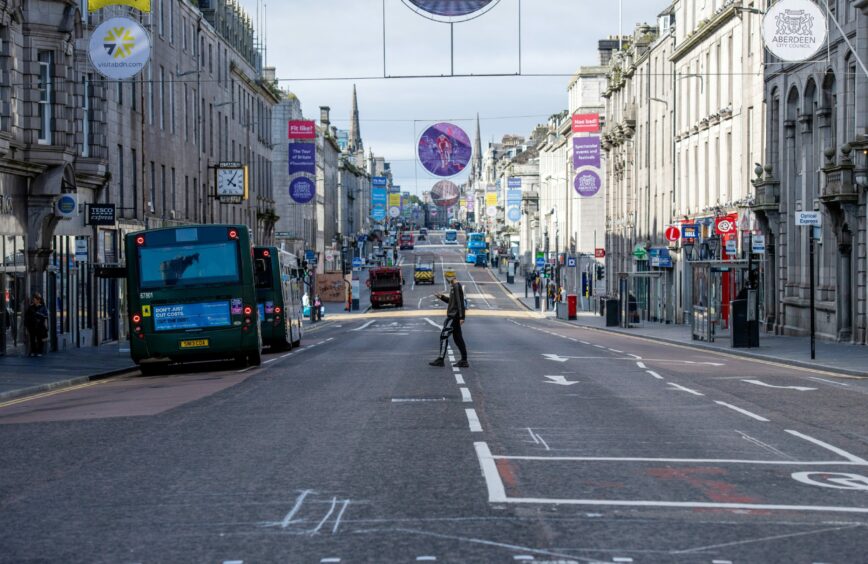If James Corden ever shows up at a north-east restaurant, he may find it difficult to secure a table.
The talk-show host spent the past week apologising for an incident that saw him “86’d” from an upmarket New York restaurant – slang for banned – because he was nasty to a manager.
In an Instagram post, the restaurant owner accused Corden of being “the most abusive customer” in the restaurant’s 25 years.
To the casual observer, Corden’s behaviour (his apology led to the restaurant – called Balthazar – lifting its ban) has the veneer of the usual celebrity diva story. Especially when you factor in a catalyst for his anger – a spot of egg white in his wife Julia Carey’s egg yolk omelette.
Oh, the humanity.
James Corden is just the tip of the iceberg
But speak to anyone in the hospitality industry, and they have a meat locker’s worth of stories about disgraceful behaviour from customers of all stripes, not just TV and film stars such as Corden.
I’ve worked shifts both back and front of house and vividly remember two drunk customers that had a fire extinguisher fight in the toilets.
Indeed, staff are so attuned to nightmare customers they’ve learned to spot them almost as soon as they walk through the door.
“With some tables, you’re waiting for what the problem is, as opposed to reacting to any problems that happen because of the way that they talk to you and treat you verbally,” says Stuart, a waiter in an Aberdeen city centre restaurant.
Like the other restaurant staff I spoke to, Stuart did not want to give his full name so he could speak more openly about the terrible people he’s served.
“I’ve often been corrected on how I address people,” adds Stuart, who typically uses an informal greeting such as “hi, guys” when he approaches a table. “They say that because I’m serving them they are ‘Sir’ and ‘Madam’. It feels like because you’re in a lower wage bracket that they get to have that power over you.”
‘They were screaming at me as I cleaned the mess up’
The good news for wait staff is that when a customer does have a meltdown the rest of the kitchen will rally round – even if the support is out of sight of guests.
When Louisa (not her real name) accidentally spilled a glass of red wine over a pregnant customer, she took the full brunt of a barrage of abuse that included the guest demanding the waitress be sacked on the spot.
“She was livid,” remembers Louisa. “They were screaming at me as I cleaned the mess up.”
Such was the torrent of invective that a sympathetic manager told a shaken-up Louisa to go home and sleep the incident off. The next morning, Louisa awoke to a string of messages on her phone.
“They were all from my colleagues saying things like, ‘Don’t worry, they were horrible people, it’s not your fault.’ It was good to see.”
Sometimes the support is more upfront. Stuart was 17 and working in his first restaurant job when a table of customers – in an attempt to get his attention – whistled.
“Before I knew anything, the head chef, who was also the owner, storms right out to the table in full chef whites and shouts: ‘Did you just whistle at my staff? Does he look like a dog?’”
TripAdvisor and the need to keep customers happy
Stuart laughs at the incident now, and makes it clear that truculent guests account for a fraction of the total.
But abusive customers take a toll on those unfortunate enough to serve them. Stuart recalls staff crying in toilets after particularly trying incidents.
And, thanks to the power of instant feedback – in the form of TripAdvisor and other restaurant review sites – meltdowns often result in a financial gain for any customer carrying one out.
Louisa ruefully recalls that the woman she spilled wine over got all of their food for free (AND still left a bad review).
Stuart says: “My manager always makes it clear that he wants everything sorted in house. A bad reputation is more expensive to the restaurant than a couple of steaks.”
As the face of the business, wait staff are being given more leeway with customers to make sure everyone leaves with a smile on their face.
The customers that go too far
Increasingly, restaurant chains gauge the success of a branch on the quality of the customer feedback, so a waiter that asks a manager for permission to dish out a freebie usually gets the go-ahead.
But not every time.
Some customer transgressions go so far beyond the realms of human decency as to be unforgivable.
“Our staff are people of all colours, speaking a variety of languages, all doing their job to an exceptional level,” says Stuart of his restaurant. “We always have to ask if tables have any allergies or dietary requirements. One time a table told their Polish waitress that they’re allergic to Polish people.”
A manger stepped in and told the table to pay their bill and leave.
“We are blessed with having managers that do care about the people that we work with,” Stuart adds. “Nine times out of ten, if we can clearly identify the guest has been totally in the wrong we have the power to kick them out.”
Mr Corden, you have been warned.
Do you have other tales of angry customers in restaurants? Tell you story in the comments below.




Conversation